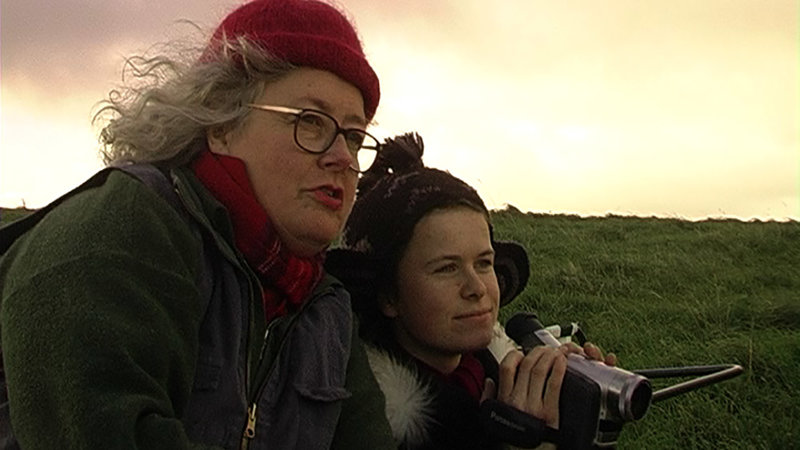
Screened as part of NZIFF 2004
Allie Eagle and Me 2004
In the 70s and 80s artist Allie Eagle was a star in the Women’s Art Movement. She lived the radical feminist life, apart from men, and her work was animated by the political struggles of the feminist and lesbian rights movements. Thirty years later Eagle’s paintings are studied in New Zealand colleges and universities, while filmmaker Briar March is completing her last year at art school. The film March has made with Eagle is a suggestively unresolved mix of homage, collaboration and mutual interrogation. A Christian since the early 80s, Eagle now struggles with her earlier stance on abortion. We see Eagle working on a new painting, ‘Tough Love’, which shows a solo mother and child, and references her famous pro-abortion-law-reform painting ‘This Woman Died I Care’. March includes her own filmmaking activity within the frame, while questioning Eagle and her contemporaries about the ground that was broken for women artists by the feminist generation. Eagle responds to the opportunity to address the significant changes she and her work have undergone in the meantime. With its twenty-something perspective on fifty-something experience, Allie Eagle and Me provides a stirring descant to Sheilas elsewhere on our programme. — BG
Allie lives in a humble house next to Bethells Beach Te Henga and the Waitakere Wetlands. This landscape is a predominant feature in her work, and also in the documentary. The film also recognises the beach community in which she is heavily involved, having a long-term commitment to the Beach Care project and setting up an atelier workshop on her property where she supports and encourages other local emerging artists. These aspects are particularly relevant to a New Zealand audience as they identify a significant part of our culture and landscape. — Briar March